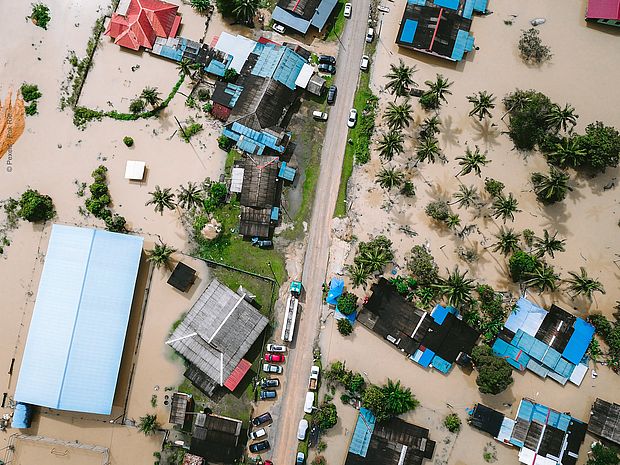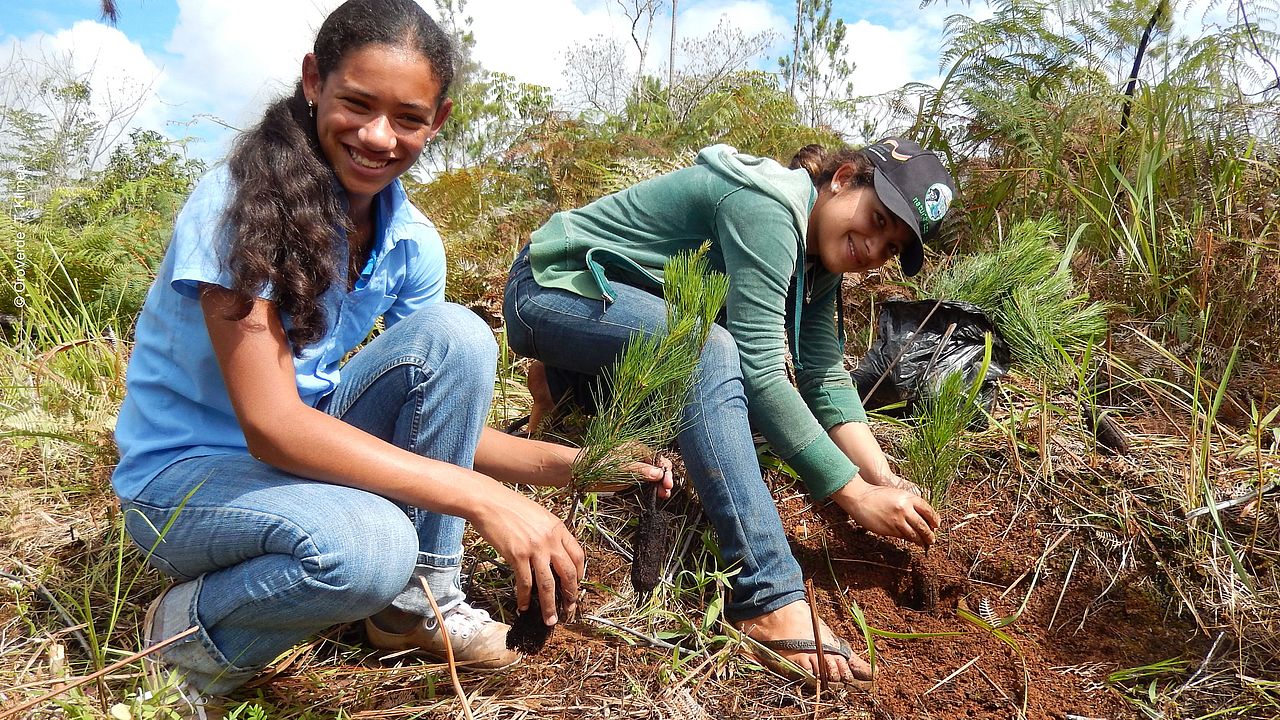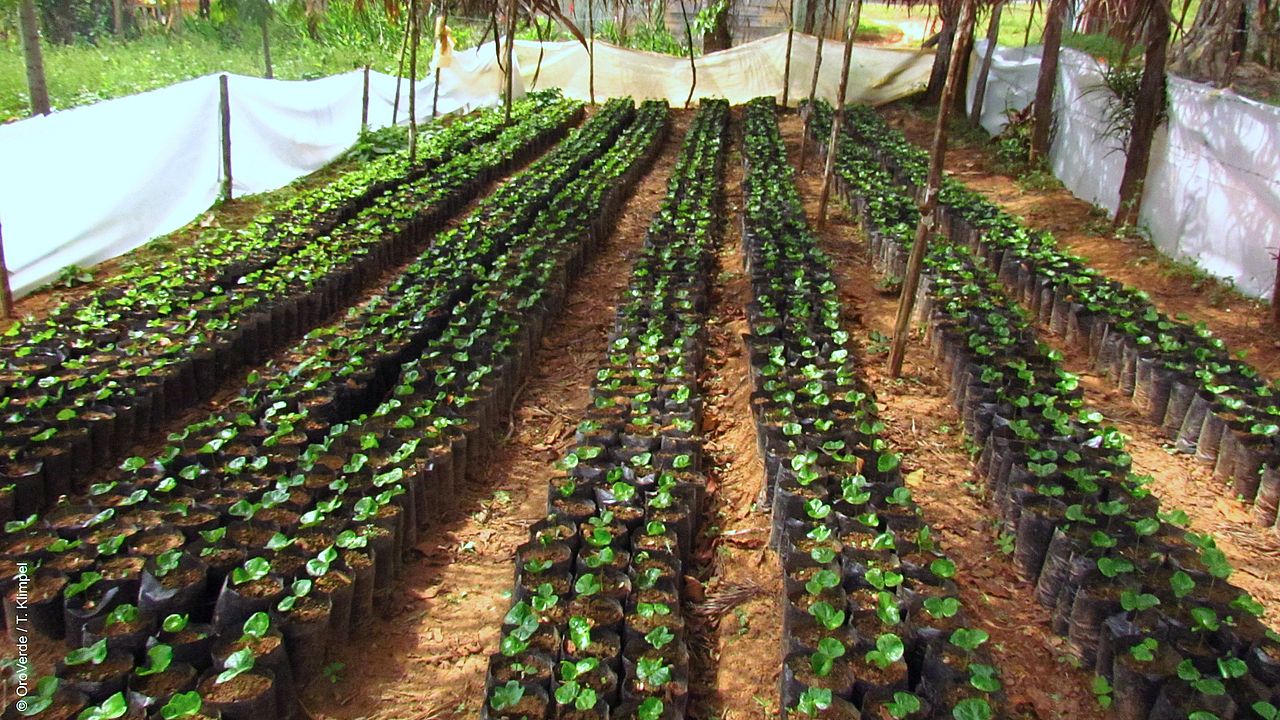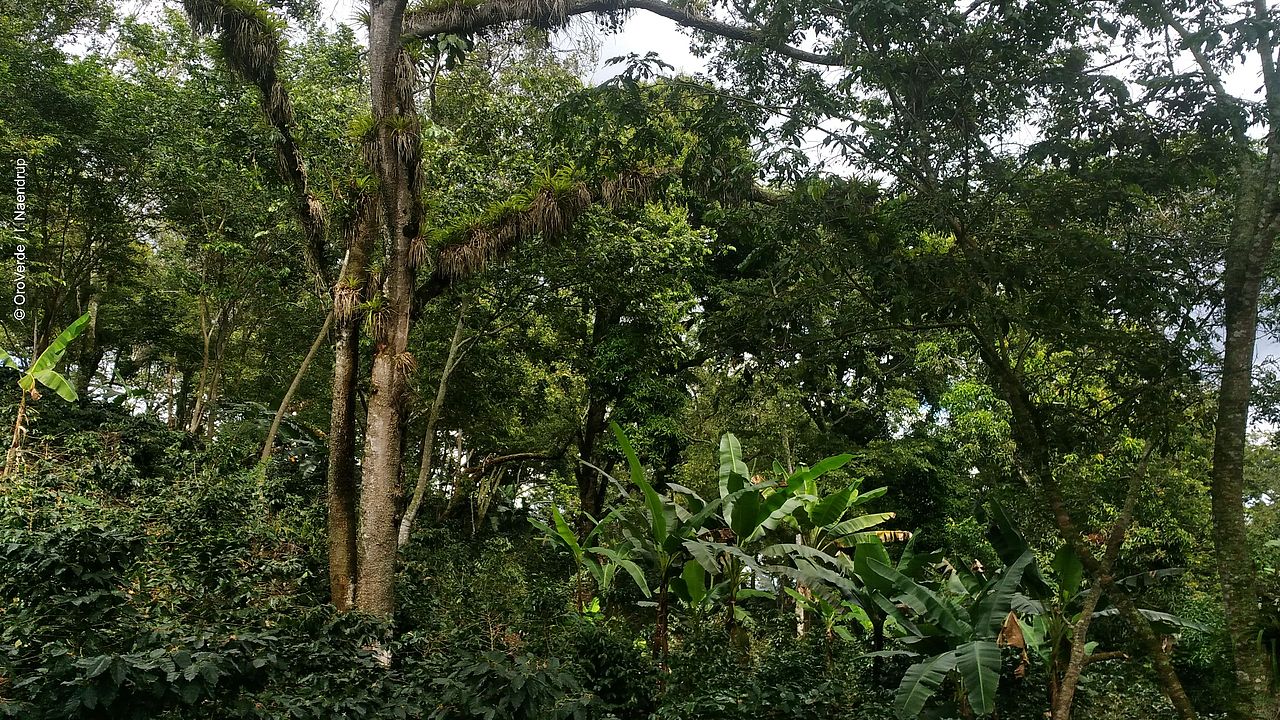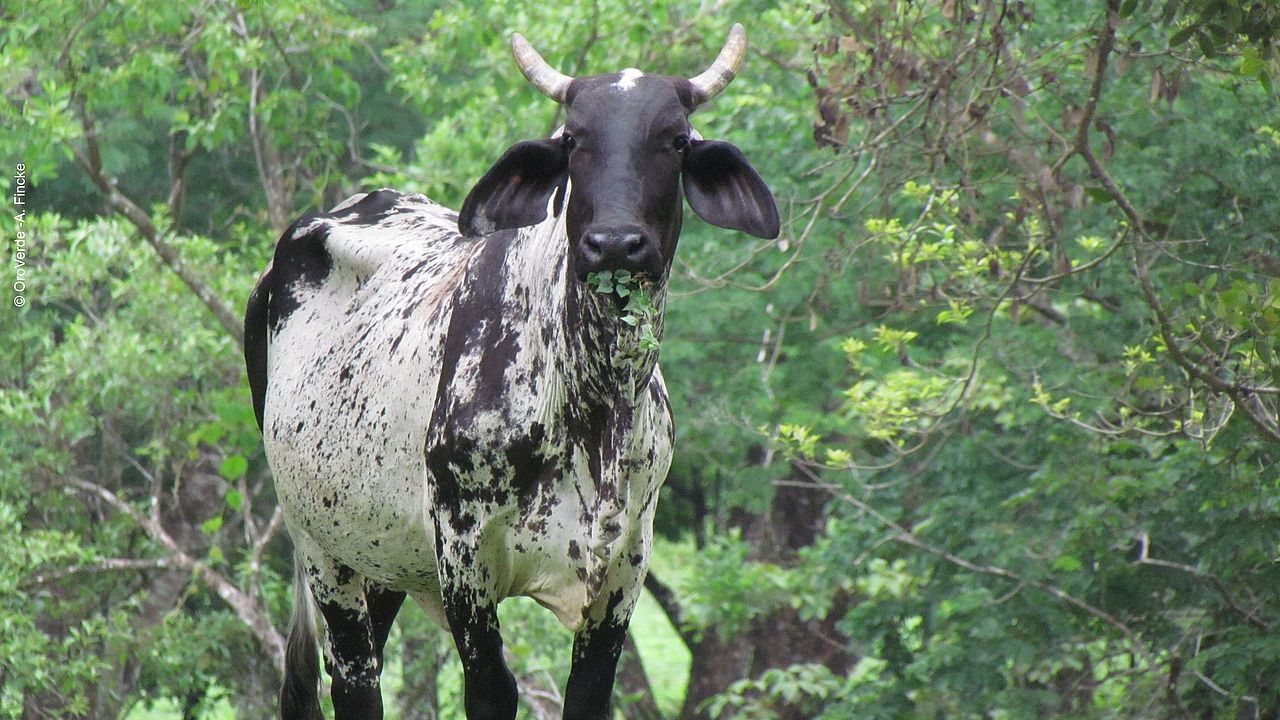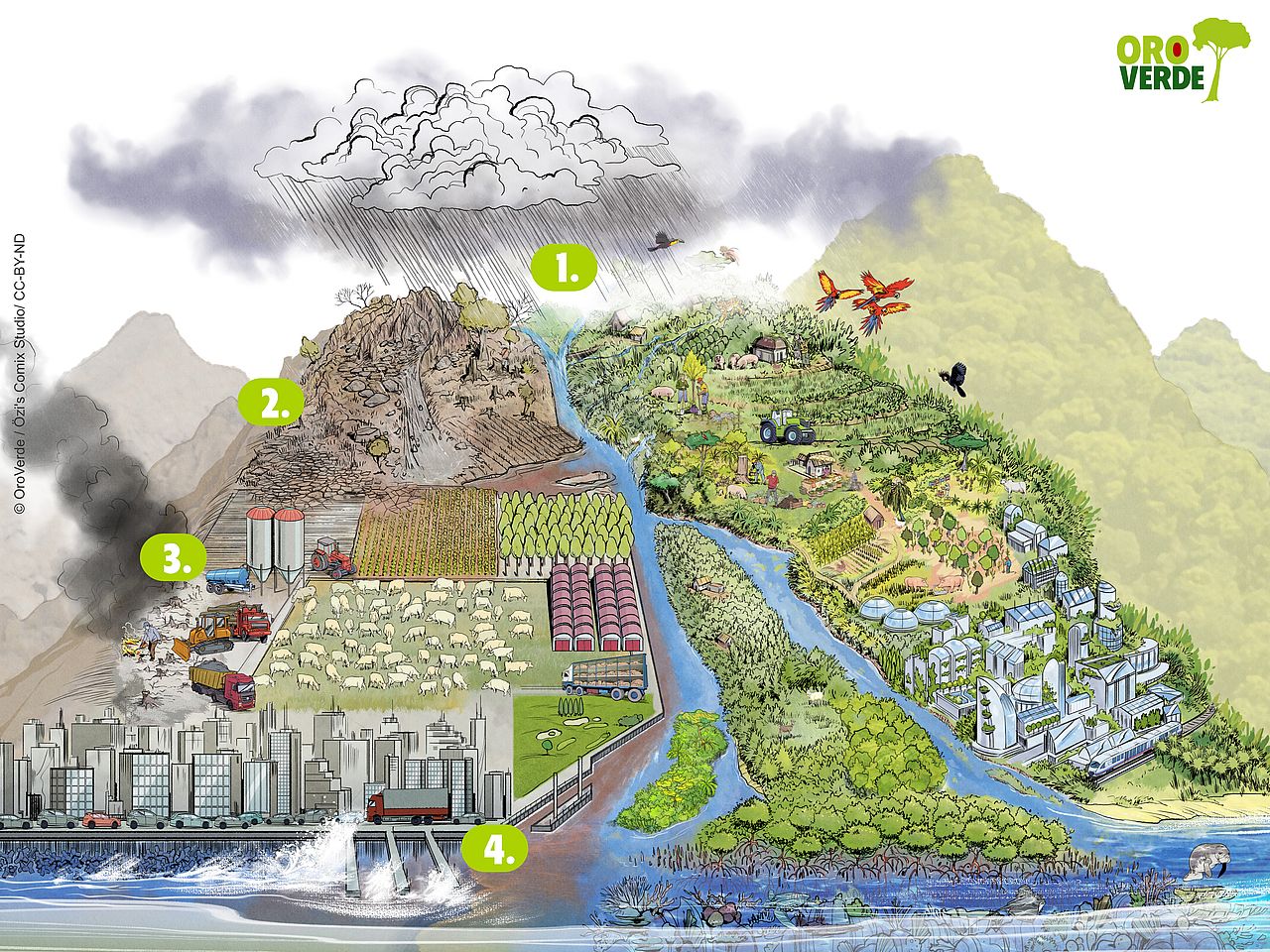Intact ecosystems are essential for human well-being. Among other benefits, they provide the foundation for fertile soil, for the production of food and clean water, while also regulating the world climate and mitigating extreme weather events. Turning towards ecosystem-based adaptation (EbA) in order to deal with the consequences of the climate crisis means maintaining vital ecosystem services and adapting to its consequences in the long run.
Climate crisis: humans must adapt
The climate has always affected the human way of living. For instance, it defines how people dress, how they build their houses, and what kind of food can be grown. In many different ways, people have always adapted to climatic conditions. However, new and more rapid solutions of adaptation are necessary in order to handle the current climatic changes caused by humans. The disastrous consequences demand swift and concrete action on climate protection and adaptation to climate change. Hence, innovative strategies, which can be easily transferred, adapted and applied, must be developed. Only this will enable human existance despite the impacts of climate change. Given the scale, complexity, unpredictability and time pressure, this task seems to be unsolvable.
Nature as an ally – Using ecosystem services sustainably
However, one possible answer is much simpler than one thinks. Our strongest ally in the climate crisis is nature itself. We need to work for and with nature instead of against it. In the field, this nature-related approach, directed at human adaptation to climate change, is called “ecosystem-based adaptation”.
The aim is to help people adapt to the current and future negative impacts of climate change by using biodiversity and ecosystem services as part of a comprehensive adaptation strategy.
What can be done?
The diverse measures embrace conservation, restoration and the sustainable use of ecosystems to increase its resilience to the consequences of climate change. In concrete terms, this can include
- Reforestation
- Soil improvement
- Agroforestry systems or
- Agriculturally adapted production techniques.
In the long term, intact ecosystems reduce the impact of extreme weather events and preserve nature's diverse services, such as water and climate regulation, air pollution control and food production.
From grey to green
So far, conventional measures, also known as grey infrastructure, have been used to counter the effects of climate change. Grey infrastructure includes breakwaters and dams against floods, or air conditioning against heat waves. In contrast to grey measures, most ecosystem-based adaptations are more cost-effective, longer-lasting and have multiple co-benefits. Infrastructure measures, such as afforestation, urban greening and ecosystem connectivity, protect the climate, act as carbon reservoirs and contribute to biodiversity conservation. They also have a high aesthetic value, serve as recreational spaces and thus promote the health and well-being of the population.
Consequences of climate change and examples of ecosystem-based adaptation
Inhabited or agricultural land is often deforested and intensively used. Intensive land use is often associated with sealing of the subsoil, straightening, often even concreting. Precipitation, especially heavy rain, can hardly be absorbed by sealed or very dry soils and therefore runs off very quickly. The excess rainwater floods landscapes, rivers, erodes the soil and can trigger mudslides.
Intact inland ecosystems, such as forests and wetlands, can reduce the impact of heavy rainfall and flooding by absorbing and storing rainwater. Sustainable management and restoration of diverse ecosystems protects against flooding, erosion and mudslides. Intact vegetation stabilises slopes and maintains soil fertility for agriculture in the long term. River restoration and the creation of floodplains also protect people and promote biodiversity.
Extreme heat events are a concern in cities, for example. The heat island effect, where temperatures in the city are higher than in surrounding rural areas, leads to an increase in heat-related morbidity and mortality. Preserving natural systems and urban green spaces such as parks and gardens can provide cooling benefits. Greening of facades and roofs also helps to buffer extreme temperatures. This green infrastructure improves the city's air quality, contributes to climate protection and promotes local biodiversity. Conventional measures as air conditioning and fans exacerbate climate change and its consequences in the long term through their energy consumption.
Periods of drought, which are often intensified by climate change, cause water shortages, crop failures and forest fires. Intact ecosystems can protect water sources and mitigate the fatal consequences of prolonged droughts. Healthy forests function like sponges, absorbing water and storing groundwater supplies that people and animals can access. Moreover, intact forests also provide opportunities for agroforestry systems and forest gardens. These can provide food for the local population, despite crop failures in commercial agriculture. They also offer a number of other benefits, such as water filtration, provision of raw materials as well as carbon bonding. Artificial irrigation using groundwater from rivers or lakes, however, is energy-intensive and can lead to water shortages.
Rising sea levels, floods and storm surges can be extremely destructive when they hit land unchecked. Healthy coastal ecosystems such as mangrove forests, coral reefs and coastal marshlands act as physical buffers that retain excess water, dissipate wave energy and stabilise coastlines. Salt marshes, mangroves and seagrasses are also recognised for their role as carbon dioxide sinks. Coastal wetlands in particular store significant amounts of carbon dioxide from the atmosphere. Furthermore, their biodiversity ensures the survival of billions of people who depend on fish as their main source of income. Grey infrastructure such as walls, dikes and breakwaters, on the other hand, are extremely costly, require maintenance and are poor in fish as well as other creatures.
Tackling the problems
There are already numerous projects around the world that contribute significantly to improving the resilience of habitats in a wide variety of ways. One of them is the GreenWatersheds project, which has been developed and managed by OroVerde in cooperation with local partner organisations since 2018. Using an integrative and cross-sectoral approach, it develops ecosystem-based adaptation measures and innovative financing mechanisms in watersheds. The project is implemented in four protected areas in Cuba, Mexico, Guatemala and the Dominican Republic, making an important contribution to the conservation of forests and unique biodiversity.
In 2019, a second project called Resilient Caribbean Communities started, based on the ecosystem-based adaptation approach. The project, in collaboration with Welthungerhilfe (WHH) and local partners, will develop ecosystem-based solutions to help make the Caribbean Biological Corridor a regional model for improving climate change adaptation and biodiversity conservation. Building on strategic planning, measures are implemented with nature as the solution in the areas of integrated water management and agriculture.
Do you have any questions?

We are here to help!
OroVerde - Tropical Forest Foundation
+49 228 24290-0
info[at]oroverde[dot]de
Photo credits: OroVerde, Torsten Klimpel (Header), OroVerde / A.Fischer, Illu: Özi`s Comix Studio // CC BY-ND (Graphic)


